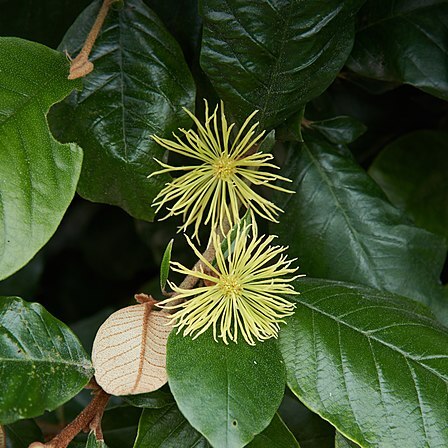Leaves opposite or alternate, ovate-cordate to oblong, usually entire, sometimes peltate at the base, petiolate; stipules linear or subulate, inconspicuous.
Stamens as many as and alternating with the petals; filaments short and thick; anthers basifixed, usually mucronate or beaked, opening by lateral valves.
Petals 4–5, linear-spathulate, greatly exceeding the calyx, with margins revolute, usually valvate, stated to be absent from female flowers.
Fruit a woody loculicidally 2-valved capsule, with bony and elastic endocarp which in dehiscence separates from the epicarp.
Ovary inferior to almost superior; styles 2, free, often recurved, persistent; ovules 1 in each loculus, apical, pendulous.
Seeds ellipsoid to oblong-ovoid, with a large apical hilar area; cotyledons large; endosperm scanty.
Flowers in small dense terminal or axillary capitula or spikes, bisexual or sometimes female only.
Calyx-tube adnate to the base of the gynoecium; calyx-lobes 4–5, valvate.
Evergreen trees or shrubs, mostly with conspicuous stellate indumentum.
